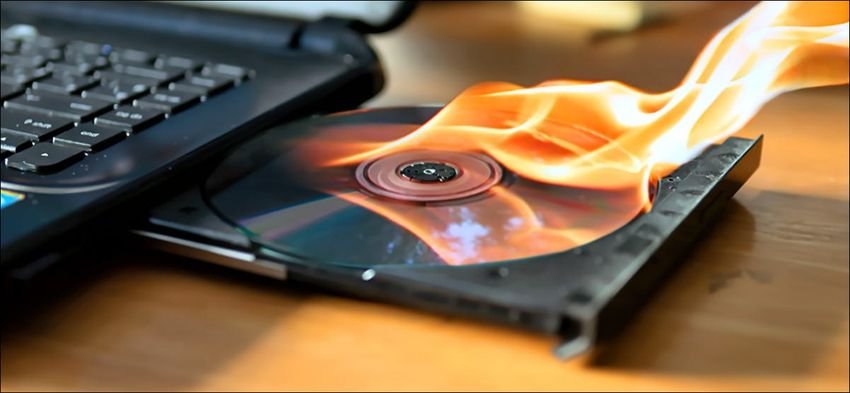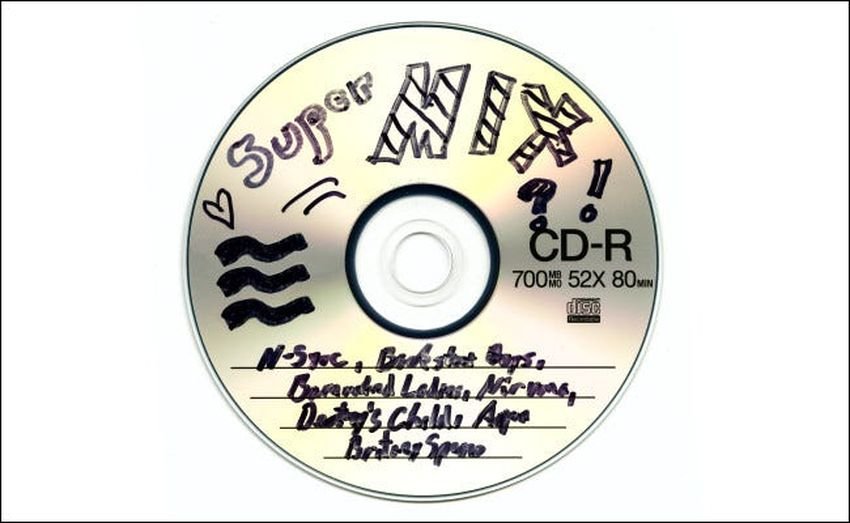If you have never encountered a recordable CD, you may not know what the term "burning a CD" means. It is dangerous; Do you need a lighter?

Let us explain to new users how the process of burning a CD works, why it is called "burning" and let those who were active in the late 1990s remember their youth.
Burning means burning a laser recordable CD
Το κάψιμο ενός CD σημαίνει την εγγραφή δεδομένων σε ένα εγγράψιμο compact disc (που ονομάζεται "CD-R" για συντομία), με μια ειδική συσκευή που ονομάζεται CD burner ή CD-R drive. The process is often called "burning" because a laser on the CD-R drive uses heat to record data to disk.
For about a decade from 1996 to 2005, many computers were sold with built-in CD-R drives so that users could back up their data, share digital photos with others, create audio CDs, and more. At some point CDs became DVDs, but with the advent of USB flash drives and the Internet, CD burning became a less popular way of storing and transferring data. However, during this time period, CD burning was very common.

In our internet search, the term "burning a CD" first appeared around 1993, when CD-R technology began to become quite affordable for professional use. But the term "burn", which means "burn", precedes CD-Rs. In particular, the phrase "burn an EPROM»Was common before CDs appeared and the term probably extends to technology before that.
How does a CD-R work?
Do not be afraid and you will not set fire. When burning a CD, nothing literally burns (like in a fire), but a chemical layer on the disc changes from the heat of the laser. To understand, you must first know how a regular CD works.
Σε ένα κανονικό CD μαζικής παραγωγής, τα δεδομένα αποθηκεύονται ως δυαδικά δεδομένα σε μια σειρά φυσικών κοιλωμάτων και επίπεδων περιοχών (ή έλλειψης κοιλωμάτων) σε ένα ειδικό στρώμα στο δίσκο. Για να διαβάσετε ένα CD, ένα CD player στέλνει μία ακτίνα λέιζερ κατά μήκος μιας σπειροειδούς εγκοπής, ενσωματωμένης στο στρώμα δεδομένων του δίσκου. Εάν η ακτίνα λέιζερ ανακλαστεί πίσω λόγω της επίπεδης περιοχής, η συσκευή αναπαραγωγής καταγράφει το σημείο ως ένα "1." Εάν η ακτίνα λέιζερ χτυπήσει ένα βαθούλωμα και μειωθεί ή εκτραπεί, καταγράφεται ως "0".

The disadvantage of mass-produced CDs is that the 1980D data layer (cavity and flat areas) is permanently sealed on the disk and cannot be changed later. But in the mid-XNUMXs, scientists at Taiyo Yuden στην Ιαπωνία ανακάλυψαν ότι δεν χρειάζονταν πραγματικά βαθουλώματα για τη διάχυση του φωτός λέιζερ. Αντ 'αυτού, θα μπορούσατε να ενσωματώσετε ένα διαφανές χημικό στρώμα στο δίσκο που θα σκουραίνει όταν θερμαίνεται από ένα λέιζερ υψηλότερης ισχύος.
This is how CD-Rs work. Thus, instead of dimples on a commercially compressed CD, CD-Rs use dark areas that "burn" the disc.
The cost of CD-Rs dropped rapidly
The first CD-Rs appeared in 1988 by Taiyo Yuden in Japan, but the first ones we found on the internet were from Optical Media International, which released in 1989 and cost $ 150.000 (about $ 324.000 today).
The Topix CD burning system of Optical Media International involved a complete supercomputer installation, as ordinary desktop computers lacked the storage space, software or any of the hardware necessary to implementation of work. (In 1989, a typical table tough disc stored 20 or 40 megabytes, and a CD-ROM could hold 650 megabytes.)

The cost of CD-R recording systems decreased dramatically, entering the game the Meridian costing $ 98.000 a few months later, and with a system from Sony that cost $ 30.000 in 1990. Finally, in 1995, when consumers could buy a Hewlett-Packard CD-R for less than $ 995, CD-Rs began to become mainstream. Speed on CD-R drives also increased over time, and by 2002, a 52x CD-R drive could burn an entire CD in less than three minutes.
As CD-R drives became more common, the cost of CD-R media also dropped dramatically. In 1990, CD-Rs cost about $ 100 per piece. By 1996, they cost about $ 10 per record. In 1999, it was about $ 1 each. And only a few years later, you could buy a bulk CD-R for a few cents per disc.
People also used CD-Rs for piracy, both in commercial piracy and for personal use, and the rapid decline in the price of CD-R media fueled this trend.
Burning a CD-R was part of our culture
As CD-R discs became cheaper around 2000, CD-R adoption grew rapidly. People started using them as a method of transferring data between computers, and the youth at the time often used them to make custom CDs musics.

Similar to mix tapes, where people document favorite songs from radio or other media, with a customized order to suit particular moods or to share their personal taste in music with friends, something similar emerged with CDs in the late 1990s. In the case of CD mixes, people usually copied ( they would “rip”) tracks from existing CDs to a computer (or download them from Napster) and then burn them to a custom CD-R containing tracks in the order they chose.
With the rise of digital music players, CD mixes began to lose ground in the mid-2000s in favor of custom playlists on iPod or smartphone.
You can still burn a CD today
While CD-Rs are definitely not as popular as they used to be, companies still sell CD-Rs, as well as the following technologies, such as CD-RW, DVD-R, DVD + R, DVD-RW, DVD + RW, blu-ray, etc. And if you have a CD-R or DVD-R drive, you can still record a CD-R or DVD-R.

Why would you want to do that? Some vintage computer users use CD-Rs to transfer data between their machines, others use them to listen to songs on an old car that has a CD player that does not support Bluetooth connectivity, and more.

But if you do, keep in mind that science has shown that CD-Rs (and their rewritable cousins CD-RWs) are not a viable archival storage medium. Many CD-Rs that burned out in the 1990s and early 2000s are unreadable today, due to their low quality.
The future of burning technology
Strange as it may seem, burning a blu-ray disc right now is probably the safest way to keep a backup of your data. There are even companies, such as Verbatim, which they report ότι τα δεδομένα σας θα διατηρηθούν για 1000 χρόνια. Φαίνεται λοιπόν ότι το "κάψιμο ενός μέσου" έχει βαθιές ρίζες και ότι δεν έχει σκοπό να παραιτηθεί τόσο εύκολα.





